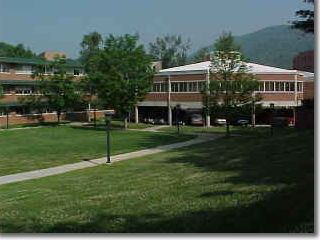Artifact # 5
Rationale: Literature Database
Context:
During the Spring Semester of 2002, in Literature in the Elementary School class, I read a variety of books focusing on different genres, subjects, and age levels. Afterwards, a summary was written as a database report. There were a minimum of twenty books that were entered into this database as a reference for future use. There are many books that are entered in this database from my fellow classmates and me.Impact:
The Literature Database was created as an effective means for reviewing books from different developmental levels, genres, and topics that others as well as myself had read. This Literature Database can be used to search for a book/s that you already have or have not read and get summaries and instructional suggestions. Since the Literature Database is a form of group interaction via online, it has proved to be a helpful method of communication between my fellow teachers and for reviewing what we have read, assessing what subjects to integrate with the books, and pondering whether to use the books in your personal classroom now or down the road.Alignment:
My Literature Database is comprised of books geared toward elementary students, that I already read in which I can refer to in the future if I need to recall them for my class use. This Literature Database will make my job so much easier because if I had previously read a book then wanted to do a lesson with my class, I could simply log on to the Literature Database and enter the book that I am searching. Another benefit of the Literature Database is the handiness in which books can be referred to whether the submission came from another or yours truly.(Tech Standard V.C) The Literature Database is all about communicating with the larger community, the users not only teachers and students, but everyone that would like to know more about a certain book. The database uses technology to connect everyone to learning literature. (Technology Standard V. D) When planning a literature lesson concerning a book or novel, the teacher must be familiar with the book or novel that will be used.A great technology resource for a teacher to use while choosing the book is the Literature Database. It is a perfect starting place to review books that have been read and lessons that can be connected with the book. There is a plethora of possibilities when you use the Literature Database for developing long range and short range plans that connect to the curriculum that is desired. Perhaps there is a short lesson that will not take more than a few days or less and then a lesson that might last half the school year, the Literature Database would have links to resources that could aid a teacher tremendously in planning.I am so glad that there is a database like this one, it can help with creating strategies and multiple plans so that if one plan doesn't work, another could be used as a back up.(INTASC 7)The Literature Database promotes the development of students and teachers. This Literature Database can be logged on to by parents, teachers, and colleagues. The Literature Database can be a sort of consultation between other teachers, my peers, and me to share our thoughts and examples of experiences and activities that the literature provides. This form of technology, Literature Database, can be extremely beneficial as a teacher and as a reader to grow professionally and instructively (INTASC. Standard 9)
